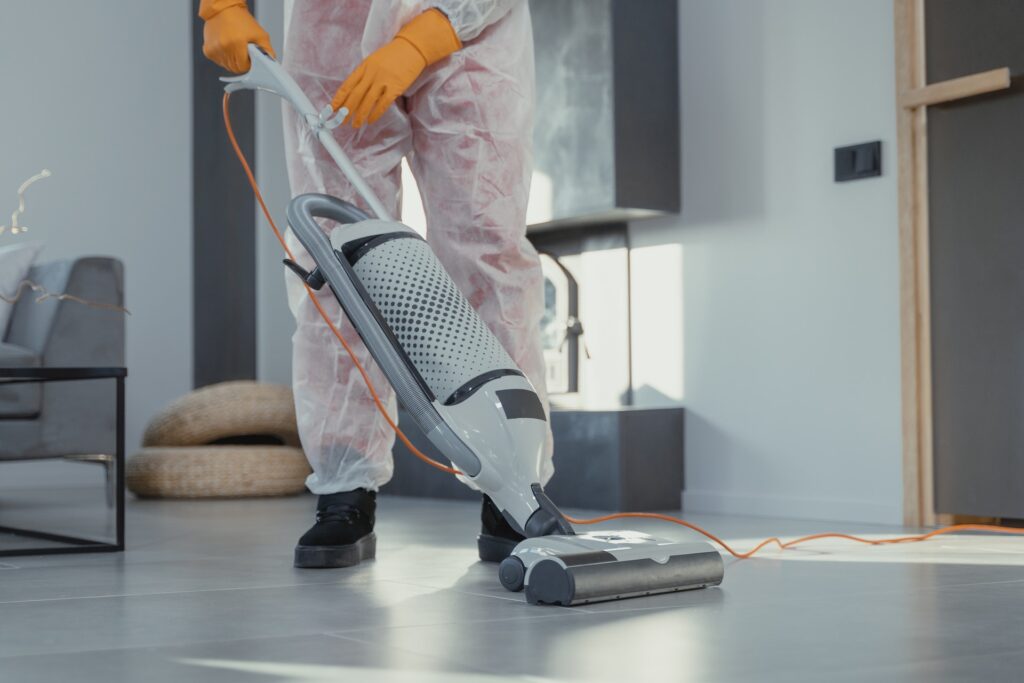
How Does Steam Cleaning Work
Understanding How Steam Cleaning and Sanitation Work
Steam cleaning has gained popularity as an effective and environmentally friendly method for deep cleaning various surfaces, from floors and upholstery to appliances and even clothing. This cleaning technique utilizes the power of steam to remove dirt, grime, stains, and even some types of bacteria and allergens. But how exactly does steam cleaning work? In this article, we will delve into the inner workings of steam cleaning, exploring the process, equipment used, and the benefits it offers.
The Process of Steam Cleaning
Steam cleaning involves the use of heated water vapor, commonly known as steam, to clean and sanitize different surfaces. The process typically consists of the following steps:
1. Heating the Water:
The steam cleaning equipment features a boiler or heating element that heats water to a high temperature, usually above the boiling point. This produces pressurized steam, which is the critical component for effective cleaning.
2. Steam Generation and Pressure:
The heated water is converted into steam within the equipment’s boiler or heating chamber. As steam is generated, its pressure builds up, allowing for the delivery of pressurized steam through a nozzle or cleaning attachment.
3. Steam Application and Agitation:
The pressurized steam is directed onto the surface being cleaned through a nozzle or attachment. Upon contact with the surface, the steam penetrates deep into the material, reaching the pores and crevices, and starts to loosen dirt, stains, and other contaminants.
4. Dirt Extraction:
Simultaneously, the steam’s high temperature dissolves and breaks down the dirt and grime, making removing it easier. Some steam cleaning machines have an integrated vacuuming system that simultaneously vacuums away the dirt and moisture to extract the loosened debris. You may use a microfiber cloth or mop to wipe away the residue for other surfaces.
Equipment for Steam Cleaning Work
Steam cleaning machines, also known as steam cleaners or steamers, specifically work for this cleaning method. They consist of the following essential components:
1. Boiler or Heating Element:
The boiler or heating element within the steam cleaner heats the water and generates pressurized steam. The quality and power of the heating element significantly impact the steam cleaner’s performance.
2. Pressure Control and Delivery System:
Steam cleaners feature mechanisms to regulate and control the steam pressure produced. These systems ensure consistent and controlled delivery of steam during the cleaning process.
3. Nozzles and Attachments:
Various nozzles and attachments are available for different cleaning applications. These attachments allow the steam to be directed precisely to the desired surfaces, such as floors, upholstery, grout lines, or even garments.

Benefits of Steam Cleaning
Steam cleaning offers several advantages over traditional cleaning methods, including:
1. Deep Cleaning and Sanitization:
The high steam temperature effectively kills many types of bacteria, germs, and allergens, providing a deep cleaning and sanitizing effect. It can eliminate stubborn stains, dirt, and grime from surfaces.
2. Chemical-Free Cleaning:
Steam cleaning reduces the need for harsh chemical cleaners, making it an eco-friendly and safer cleaning option for both the environment and human health.
3. Versatile Applications:
You can use steam cleaning on a wide range of surfaces, including hard floors, carpets, upholstery, tiles, grout, appliances, and more. The various attachments allow for versatile cleaning in different areas of your home or workspace.
4. Faster Drying Time:
Steam cleaning typically results in faster drying times than traditional wet cleaning methods since less moisture is left behind. It minimizes the risk of mold or mildew growth.
Potential Disadvantages of Steam Cleaning
While steam cleaning is generally considered a highly effective and versatile cleaning method, it does have a few potential disadvantages to consider:
1. Heat Sensitivity:
Steam cleaning involves the use of high-temperature steam, which may not be suitable for heat-sensitive materials. Delicate fabrics, certain types of wood, and surfaces prone to warping or discoloration may not be compatible with steam cleaning. It’s important to check the manufacturer’s guidelines and test a small, inconspicuous area before steam cleaning such surfaces.
2. Moisture and Drying Time:
Steam cleaning introduces moisture to the surface being cleaned. It can be a disadvantage if not properly managed or if the surface has limited moisture tolerance. Excessive moisture can lead to extended drying times, which may be inconvenient, especially in high-traffic areas or when quick use of the space is required.
3. Potential for Surface Damage:
While steam cleaning is generally safe for many surfaces, improper use or extended exposure to high-pressure steam can cause damage. Surfaces with loose or damaged finishes, poorly sealed grout, or weak adhesive may be more susceptible to potential harm from the force or moisture of the steam.
4. Limited Effectiveness on Certain Stains or Substances:
Steam cleaning is effective for many types of stains and dirt, but it may not be equally effective against all substances. Certain stains, such as oil-based or deeply embedded ones, may require additional treatments or specialized cleaning methods beyond steam cleaning alone.
5. Initial Investment:
Steam cleaning machines can require a significant upfront investment, especially for high-quality, professional-grade models. While this cost can be offset by reduced reliance on chemical cleaners and professional cleaning services in the long run, it may still be a consideration for those on a tight budget.
6. Skill and Training Requirements:
While individuals can do steam cleaning with proper instructions and guidance, specific applications and more complex cleaning tasks may require professional expertise. Achieving optimal results may depend on the user’s knowledge of proper techniques, appropriate steam pressure, and suitable attachments for different surfaces.
It’s essential to weigh these potential disadvantages against the benefits and specific cleaning needs of your surfaces before deciding if steam cleaning is the right method for you. Following manufacturer instructions, testing on inconspicuous areas, and seeking professional advice when needed can help mitigate these potential drawbacks.

Difference Between Steam Cleaning and Regular Cleaning
Steam cleaning and normal cleaning are two different approaches to maintaining cleanliness, and they differ in terms of techniques, tools, and outcomes. Here are some key differences between the two methods:
1. Cleaning Mechanism:
Normal cleaning typically involves the use of water, detergents, and cleaning solutions to remove dirt, stains, and grime from surfaces. Scrubbing, wiping, and rinsing are commonly employed techniques. It relies on the cleaning tools’ physical action and the cleaning agents’ chemical properties to break down and remove contaminants.
On the other hand, steam cleaning relies on the power of high-temperature steam to clean surfaces. Pressurized steam is directed onto the surface, penetrating deep into materials and loosening dirt, grime, and stains. The heat of the steam helps to dissolve and sanitize, while the force of the steam assists in lifting debris away from the surface.
2. Chemical Usage:
Normal cleaning often involves the use of various cleaning agents, including detergents, solvents, and disinfectants. These chemicals help to enhance the cleaning process by breaking down grease, stains, and germs. However, they can sometimes leave residues or pose environmental concerns.
In contrast, steam cleaning typically utilizes only water and steam without the need for additional chemicals. The high temperature of the steam itself provides effective sanitization and can eliminate many bacteria and allergens, making it a chemical-free cleaning method.
3. Deep Cleaning and Sanitization:
Normal cleaning is generally effective for routine maintenance, surface-level cleaning, and light stains. It can remove visible dirt and grime, but it may not penetrate deep into porous surfaces or effectively sanitize certain areas.
On the other hand, steam cleaning offers a deeper level of cleaning. The high-temperature steam can reach tiny crevices and pores, effectively removing embedded dirt, bacteria, and allergens. It is particularly beneficial for sanitizing surfaces, eliminating germs, and providing a thorough cleaning result.
4. Drying Time:
Drying time is often faster with regular cleaning methods, as they typically involve using water or damp cleaning solutions that can be easily wiped or air-dried. Surfaces are usually ready for use shortly after cleaning.
In steam cleaning, surfaces may require more time to dry since steam introduces moisture during the cleaning process. While steam cleaning machines often extract excess moisture, it can still take longer for surfaces to dry completely, especially if the steam cleaner does not have built-in drying capabilities.
5. Versatility:
You can use normal cleaning methods on a wide range of surfaces and materials, including floors, countertops, windows, and more. Different cleaning solutions and tools are available to suit specific surfaces and cleaning needs.
Steam cleaning is also versatile and can work on various surfaces such as floors, carpets, upholstery, tiles, and appliances. However, it may not be suitable for heat-sensitive materials or surfaces that cannot tolerate moisture.
Ultimately, the choice between steam cleaning and normal cleaning depends on factors such as surface type, level of cleanliness required, and personal preferences. Both methods have their advantages and can be used in combination to achieve optimal cleaning results.
Things to Avoid When Steam Cleaning
When steam cleaning, it’s important to be aware of certain precautions and things to avoid to ensure safe and effective cleaning. Here are some key things to keep in mind:
1. Delicate or Heat-Sensitive Surfaces:
Avoid using steam cleaning on surfaces that are sensitive to heat or moisture. It includes delicate fabrics, certain types of wood, waxed surfaces, and electronics. Always check the manufacturer’s instructions or consult a professional to determine if steam cleaning suits a particular surface.
2. Unsealed or Unstable Surfaces:
Avoid using steam cleaning on unsealed surfaces, as the moisture from the steam can penetrate and cause damage. Similarly, avoid using steam cleaning on unstable surfaces, such as loose tiles or poorly adhered wallpaper, as the force of the steam may worsen the condition or cause detachment.
3. Electrical Outlets and Live Wires:
Never steam clean near electrical outlets, power sockets, or live wires. Water and electricity do not mix, and steam cleaning in these areas can pose a serious safety hazard. Take care to avoid electrical components or cover them adequately before steam cleaning nearby areas.
4. Heat-Sensitive Objects and Decorations:
Keep heat-sensitive objects, such as candles, artwork, vinyl records, or certain plastics, away from the direct path of the steam. The high temperature of the steam can potentially damage or deform these items.
5. Insufficient Ventilation:
Ensure proper ventilation when steam cleaning, especially in enclosed spaces. Steam can generate heat and moisture, which may cause condensation or increase humidity levels. Open windows or use fans to allow for adequate air circulation during and after steam cleaning to prevent potential mold or mildew issues.
6. Cleaning Solutions or Chemicals:
While steam cleaning generally relies on water and steam alone, avoid adding cleaning solutions or chemicals to the steam cleaner unless specifically recommended by the manufacturer. Improper use of chemicals in steam cleaners can damage the equipment, produce harmful fumes, or leave residues that may affect cleaning effectiveness or surface safety.
7. Direct Contact with Skin:
Avoid direct contact with steam or hot surfaces during the cleaning process to prevent burns or scalds. Always observe the safety instructions provided by the steam cleaner manufacturer, including wearing appropriate protective gear such as gloves or safety glasses.
8. Overuse on Certain Surfaces:
While steam cleaning can work effectively for many surfaces, excessive or prolonged use on certain materials, such as painted surfaces or laminates, can cause damage over time. Be mindful of the recommended frequency and duration of steam cleaning to avoid potential adverse effects.
By being aware of these precautions and avoiding the listed items, you can ensure safe and effective steam cleaning and protect both your surfaces and yourself during the process. Always refer to the manufacturer’s guidelines and follow best practices for your specific steam cleaner.

Call our Professional Maintenance Team!
Steam cleaning is a highly effective and versatile cleaning method that work by utilizing the power of steam to deep clean and sanitize surfaces. By heating water to produce pressurized steam, steam cleaners can effectively dissolve dirt, grime, and stains while also eliminating bacteria and allergens. With its chemical-free approach and ability to clean a wide range of surfaces, steam cleaning has become a popular choice for many individuals seeking a comprehensive and eco-friendly cleaning solution.
However, if you want to make sure that you get the best steam cleaning work, you can contact our team at Miracle Maintenance to provide the best maintenance services in Arizona!









No Comments
Sorry, the comment form is closed at this time.